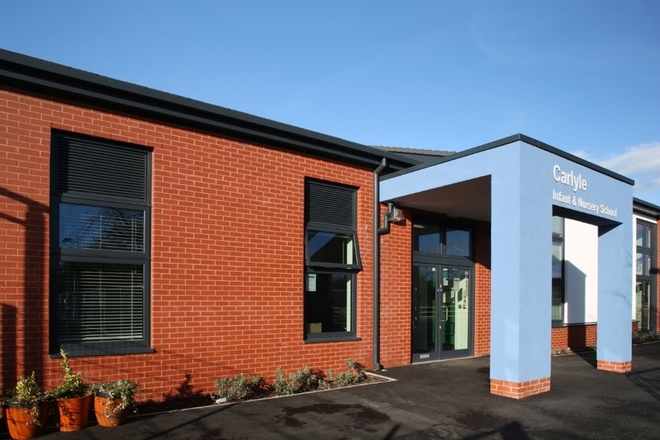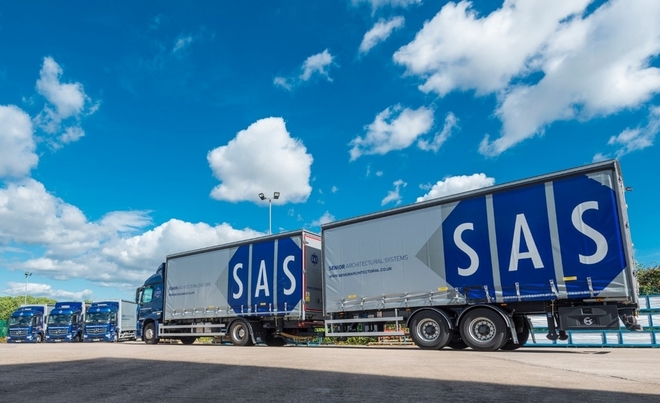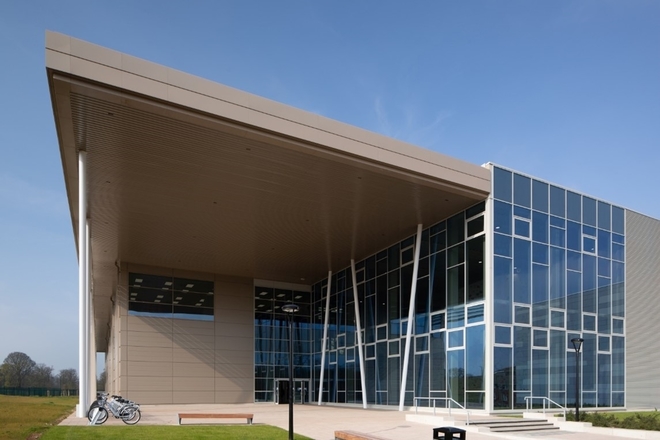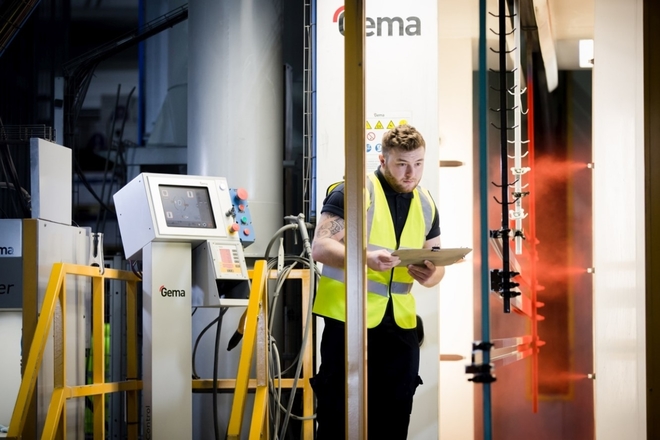Climate change is a hot topic. The news is full of stories about wildfires, floods, droughts and extreme weather events. With human activity confirmed as the cause, we take a look at how the construction industry can play its part in combating climate change. Read more…

Photo by Mario Hoppmann Creative Commons
The latest report from The Intergovernmental Panel on Climate Change (IPCC)1 makes uncomfortable reading. It confirms that human activity is unequivocally responsible for global warming and gives a stark warning that we will only be able to keep global temperature rise below 1.5 oC (the critical threshold for a climate-safe future) if we act immediately to make large scale reductions in CO2 and other greenhouse gases.
So, what does this mean for the construction industry? In the UK heating and powering buildings currently accounts for 40% of total energy usage.2 And according to the International Energy Agency the buildings and buildings construction sectors combined are responsible for over one-third of global final energy consumption and nearly 40% of total direct and indirect CO2 emissions.3
To change this requires much more than tinkering at the edges. Already the UK Government has set in law a target to bring its greenhouse gas emissions to net zero by 2050 in line with the ambitions of the Paris Climate Agreement. To facilitate this the UK Green Building Council (UKGBC) has put together a framework for the UK construction and property industry looking at construction methods and products as well as at operational energy.4 The government has also committed to a Future Homes Standard which will ensure that all new-build homes are zero carbon ready.
It looks daunting. But there are practical things that the construction industry and in particular the fenestration industry can do and are already doing to play their part in tackling this crisis. Here’s our starter for 10.
-
1. Sign up to the Government’s climate change agreement
These are voluntary agreements made between UK industry and the Environment Agency to reduce energy use and carbon dioxide (CO2) emissions.5 At Senior we have already signed up and are now committed to reducing our energy usage by 8% every year until 2025.
-
2. Develop new more energy efficient products
Innovation will be a big part of the answer to climate change. The construction industry is working hard to develop new products which are more energy efficient both in their manufacture and in their operation.
At Senior we’re already ahead of the game and started researching and developing a range of exceptionally efficient windows and doors back in 2012. This has led to a patented new type of thermal break manufactured from polyurethane which has now been incorporated into our range of PURe® windows and doors. Incredible, U- Values as low as 0.71 W/m2K for PURe® windows and 0.93 W/m2K for PURe® doors (both calculated as a CEN standard) can be achieved, exceeding the requirements of current building regulations and of the proposed changes to Part L of the regulations due out in early 2022.
Once installed the PURe® range of windows and doors can significantly reduce energy usage.

Installing PURe® aluminium windows at Carlyle Infant School shaved 3-4% off the CO2 Emissions Rate Target
Carlyle Infant School in Derby was the first project to benefit from using PURe® windows and according to James Vaux- Anderson from main contractor Bowmer & Kirkland, installing PURe® windows shaved 3-4% off the CO2 Emissions Rate Target to meet the Greater London Authority’s requirement of over delivering by 35% on the Part L Building Regulations.6
-
3. Reduce transport miles
Transport of building materials to the site accounts for a significant proportion of the energy used and CO2 emissions produced by the construction industry. There are many things that can be done to reduce transport miles including:
- Pre planning of routes to minimise mileage
- Job planning to avoid multiple trips to site and half full or empty lorry journeys
- Tight packing of each vehicle to reduce the number of trips required
- Use of local materials suppliers

At Senior we make sure our 5-star eco trucks are tightly packed and the route carefully planned to reduce transport miles.
At Senior we have a nationwide network of fabricators, so wherever your project is based, there will be a supplier of Senior’s aluminium windows, doors and curtain walling close by. And as the only entirely UK based fenestration systems house, you can be confident that our products are some of the least travelled in the industry.
-
4. Plan for increased solar gain
Solar gain is the increase in temperature within a building due to solar radiation either directly through an opening e.g., a window, or indirectly by heating the fabric of the structure. Although solar gain can help to keep buildings warm in the winter, too much solar gain especially in the summer months can cause overheating, which can be hazardous to health.
So, as the overall global temperature rises, it will be essential to control solar gain to prevent overheating and reduce the need for air conditioning. In fact, the new Part L Building regulations due out in early 2022 will include the requirement for an overheating analysis for all residential buildings.
The Government proposals include limiting the maximum glazing area to 21% of the floor area in England (13% in Greater London and 15% in Greater London where the openings are on façades which are not opposite). They also require shading on glazing in Greater London between NE and NW (via south).7
Other ways of reducing solar gain include:
- Orientating doors and windows away from direct sunlight
- Using reflective materials on the glass and building fabric
- Insulating walls and roof spaces to prevent indirect solar gains into the building
-
5. Use natural ventilation
Not only is natural ventilation cheaper than using air conditioning, but it also reduces energy usage and CO2 emissions. Plus, the Covid Pandemic has taught us that natural ventilation can have a positive effect on health and wellbeing.
A good example is the Sports and Wellness Hub at the University of Warwick where opening PURe® Aluminium Vents were included in the dramatic façade created using Senior’s SF52 Aluminium Curtain Walling. The thermal efficiency of the glazing together with less need for mechanical ventilations was part of the solution, which has enabled the building to become the most energy efficient leisure centre in the UK, performing 27.5% better than the Chartered Institution of Building Services Engineers’ Energy Benchmark.

PURe® Aluminium Vents in SF52 Curtain Walling at the new Sports and Wellness Hub at the University of Warwick
Again, the Government have proposed changes to Part F of the Building Regulations regarding Ventilation due to come into force in early 2022.8,9
-
6. Increase daylighting
It is now well recognised that natural light can have a positive effect on health and wellbeing. In particular morning daylight can significantly improve depression, agitation, sleep, circadian rest-activity, and seasonal affective disorder.10
Just as important, more natural light reduces the need for artificial lighting during daylight hours which can reduce energy usage and carbon emissions. The Government recommend that daylighting should be considered as part of the whole-house design for building energy-efficient new homes.11
Choosing thermally efficient aluminium windows such as our PURe® windows, which have a patented ultra efficient thermal break, can increase daylight whist reducing solar gain in the summer and preventing heat loss during the winter.
The size and location of windows should be based on the cardinal directions. South and North facing windows are best, as although West and East facing provide good daylight penetration in the morning and evening, respectively, they may cause glare, admit a lot of heat during the summer when it is usually not wanted, and contribute little to solar heating during the winter.11
-
7. Cut down whole life carbon
The sum impact of all the greenhouse gas emissions attributed to the materials used in a building’s construction is known as the embodied energy of the building. This includes emissions due to extraction of raw materials, manufacturing, construction, maintenance, and disposal.
One of the most effective ways of reducing whole life carbon is to design buildings with a long-life span, using materials that will last without the need for replacement.12
When it comes to windows and doors, investing in durable, low-maintenance frames e.g., powder coated aluminium frames means fewer replacements over the life span of the building. This results in fewer carbon emissions, less waste and lower overall life cycle costs. In fact, all Senior’s aluminium frames have a life expectancy in excess of 40 years, and are all are 100% recyclable.
-
8. Reduce waste
Waste is costly, both in financial terms and in carbon emissions. At Senior we use a 2-pronged approach to reducing waste.
Firstly, we help our fabricators order the correct length of aluminium profiles by using LogiKal software (the industry standard costing and estimating system). Our dedicated team of estimators and LogiKal software engineers make sure that waste is kept to a minimum. And of course, any waste aluminium can be recycled indefinitely.

Senior’s state-of-the-art waste-reducing horizontal paint line saves 22 tonnes of waste product from being sent to landfill every year
Secondly, we recover, recycle and reuse waste generated in our manufacturing processes wherever possible. For example, we have invested in a waste-reducing paint line for our aluminium powder coating service, which has reduced our powder coating usage by 20% and saves 22 tonnes of waste product from being sent to landfill every year.
We have also installed a biomass boiler which is fuelled by our packaging and timber waste and used to heat our warehouse, providing significant savings in both energy usage and costs.
-
9. Ensure correct installation
All your efforts at improving energy efficiency can be undone by incorrect use, installation and maintenance of the products specified. With fenestration in particular it is essential to use an experienced and fully trained installer. If windows and doors are not correctly installed and sealed air leakage can occur and both thermal efficiency and weathertightness will be reduced.
At Senior we provide ongoing training for our network of experienced fabricators so that you can be confident in a correct installation. We also provide an operations and maintenance manual to make sure that the product will perform perfectly throughout its lifespan.
-
10. Get expert advice on energy efficient solutions
To make sure that you are using the most energy efficient products for your build and understand how they interact with other components of the construction requires an encyclopaedic knowledge. The best way to acquire this is via the product suppliers. Often easier said than done.
Senior understands that your time is precious, so to make your life easier, we have an experienced team of architectural advisors who can put together the perfect glazing package to meet your performance criteria as well as your budget and aesthetic considerations.
In particular they can advise on the detailing of the interfaces between curtain walling and cladding or other elements of the building to make sure that they are weather resistant, and prevent moisture reaching parts of the wall that could be adversely affected.
For the best results, we advise contacting the team early at the planning stage. Once the installation starts, your architectural advisor will be on hand to ensure that the products are correctly installed to reduce snagging time later.
To take advantage of this service, simply contact your local architectural advisor.
- Climate Change 2021: The Physical Science Basis
- Ministry of Housing, Communities & Local Government, ‘The Future Buildings Standard’ Consultation on changes to Part L (conservation of fuel and power) of the Building Regulations for non-domestic buildings and dwellings
- Buildings: A source of enormous untapped efficiency potential
- UK Green Building Council presents industry framework for net zero carbon buildings
- Climate Change Agreements
- PURe Glazing System First Choice for Architects & Contractors
- Approved Document [X] – Overheating
- Approved Document F – Ventilation
- Approved Document F – Ventilation Volume 1: dwellings
- Impact of Windows and Daylight Exposure on Overall Health and Sleep Quality of Office Workers: A Case-Control Pilot Study
- Daylighting – Energy Saver
- The 10 design commandments for cutting your building’s embodied carbon

Comments are closed.